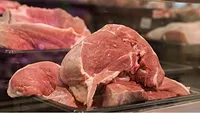Study Describes Distribution of Retail Flexible Funding Model Grants to High-Need Jurisdictions

Image credit: Anna Shvets via Pexels
A recent assessment1 conducted by the National Environmental Health Association (NEHA) and funded by the U.S. Food and Drug Administration (FDA) has provided a better understanding of NEHA-FDA Retail Flexible Funding Model Grant Program (RFFM) distribution through a social determinants of health (SDOH) lens. The research aimed to identify if RFFM gave state- and local-level jurisdiction sub-awards to communities with evidence of challenges across the SDOH spectrum.
SDOH is a U.S. Centers for Disease Control and Prevention (CDC) framework, defined as the conditions in the environments where people live that affect a range of health outcomes and risks. SDOH can be grouped into five domains: economic stability, healthcare access and quality, social and community context, education access and quality, and neighborhood and built environment. SDOH analyses can help determine how to allocate resources and plan program interventions to ensure optimized food safety practices, particularly for high-need communities.
RFFM provides funding to state, local, tribal, and territorial (SLTT) retail food regulatory agencies as they achieve and advance conformance with FDA’s Voluntary National Retail Food Regulatory Program Standards (Retail Program Standards). Poor retail food safety regulation has been associated with an increased risk of foodborne illnesses, which is more common in low-income communities with limited access to healthy food and fresh produce. However, research is still limited regarding the impact SDOH has on foodborne illness.
To further understand the need for comprehensive program investments for greater impact and improvements in public health, the study used geographic information systems (GIS) to map the first year SLTT grant program awardees, with a selection of their jurisdiction’s SDOH metrics. The assessment revealed that, in its first year (calendar year 2022) of the three-year cycle, RFFM granted 428 awards totaling $6.87 million in funding to over 200 jurisdictions nationwide, 82 of which were state-level, 338 were local-level, two were tribal-level, and six were territory level. Sub-awardee jurisdictions related to SDOH metrics as follows:
- 62 percent of state-level sub-awardee jurisdictions had high school graduation rates below the national average, and 33 percent of local-level sub-awardee jurisdictions had high school graduation rates below the national average
- 69 percent of state-level sub-awardee jurisdictions had populations with higher-than-average poor health rates, and 75 percent of local-level sub-awardee jurisdictions had populations with higher-than-average poor health rates
- 31 percent of state-level sub-awardee jurisdictions had a higher-than-average population of children living in poverty, and 43 percent of local-level sub-awardee jurisdictions had a higher-than-average population of children living in poverty
- 42 percent of state-level sub-awardees’ jurisdictions population had a median household income below the national average, and 53 percent of local-level sub-awardee jurisdictions had a median household income below the national median
- 89 percent of state-level sub-awardee jurisdictions had a population with an above-average rate of low income and distance to a grocery store, and 73 percent of local-level sub-awardee jurisdictions had a population with an above-average rate of low income and distance to a grocery store.
Using CDC’s SDOH metrics, the researchers combined the jurisdictions represented with their SDOH variable measure, and found that 100 percent of the $2.39 million in state-level funding went to jurisdictions with high social needs, while 88 percent ($3.83 million) of the $4.33 million in local-level funding went to jurisdictions with high social needs.
Mapping and understanding retail food safety governing agency interventions and investments, SDOH status, and reported annual foodborne illness outbreaks across national jurisdictions may help to lay a solid foundation and understanding of how SDOH and foodborne illness are related, state the authors. Additionally, they underline that geographic analyses of funding allocation in conjunction with SDOH indicators can help to identify potential opportunities for collaboration with environmental health professionals within high need communities who have awareness of community needs and on-the-ground experience relevant to the successful implementation of the Retail Program Standards.
According to the researchers, the geographical distribution analysis of RFFM grant sub-awardees exemplify the opportunity to understand the need for comprehensive program investments that have the greatest impact on public health provided by the integration and analysis of program-specific grant funding and mapping with relevant health determinants. The authors highlight the importance of addressing social disparities related to SDOH to improve health outcomes and increase food safety awareness.
Reference
- Gill, G., Fahnestock, L., DeVito, R., Somaiya, C.K., Streuli, S., Ramirez, D., Baker, R., Johnstone, A., Dyjack, D., Randhawa, M., "Investing in Retail Food Safety: Assessing the NEHA-FDA Retail Flexible Funding Model Grant Program’s Distribution Through an SDOH Lens," Journal of Food Protection (2023), doi: https://doi.org/10.1016/j.jfp.2023.100181.
Looking for quick answers on food safety topics?
Try Ask FSM, our new smart AI search tool.
Ask FSM →









